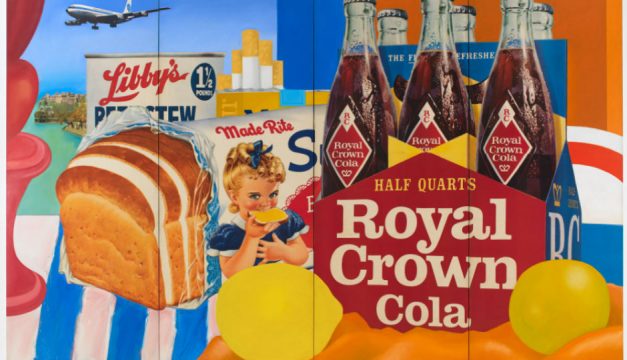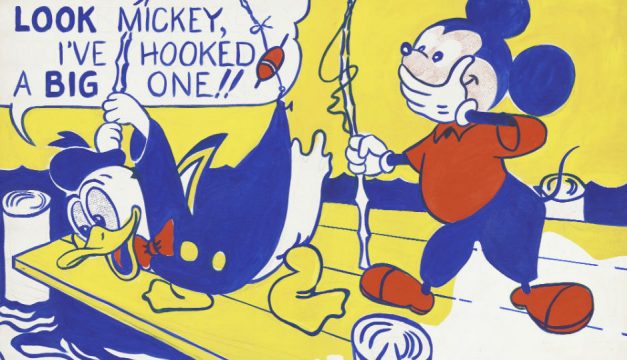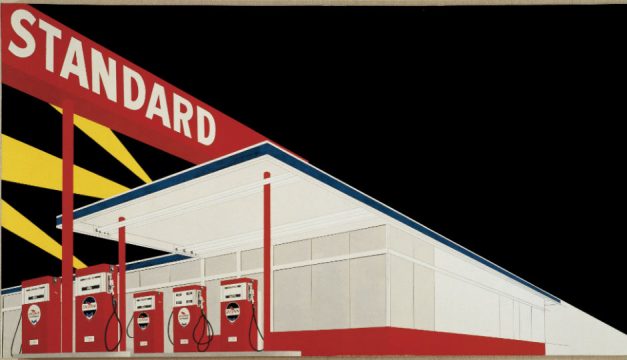Why the Art Museum’s Gigantic Pop Art Exhibition Is So Important

Still Life #35, 1963, by Tom Wesselmann (Collection of Claire Wesselmann) © Visual Artists and Galleries Assoc., Inc. (VAGA), New York
Starting tomorrow, the galleries at the PMA will be loaded with seductive, provocative works so big and bold they changed the definition of art. The strong images and graphics in the new “International Pop” show exhibition speak to mass culture that bombards the eye: giant, moving Bridget Bardot lips, JFK gesturing in silhouette, a huge Chairman Mao, Playboy Bunnies, Mickey Mouse, Felix the Cat, Coca-Cola bottles, Roy Rogers, Astro Boy, samurai warriors and on and on.
In the 50s, ’60s and ’70s, Pop dared to incorporate — and legitimize — a whole new repertoire of subject matter and elevate it into art. The lines between high art and low art disappeared. These artists were fascinated with the by-products of pop culture unlike their predecessors as the exchange of information exploded globally. Advertising and its culture of seduction, print media, television, art as commodity, celebrity culture, political propaganda were all fodder for the Pop spirit.
This retrospective show of paintings, sculptures and mixed media goes beyond our American-centric definition of who belonged to this art revolution. The exhibit beguiles with a fresh combination of familiar, iconic pieces from American and British Pop artists — Andy Warhol’s “Sixteen Jackies”; Jasper John’s “Flag”; Roy Lichtenstein’s “Look Mickey”; Edward Ruscha’s “Felix” — with lesser known, sometimes completely unknown, work from artists working at the same time in Germany, France, Belgium, Iceland, Venezuela, Argentina, Japan, etc. The exhibition challenges how we’ve customarily defined Pop Art and offers evidence — 150 works by 80 artists from around the globe — to prove that it’s more sweeping and varied that we had come to believe.

Look Mickey, 1961, by Roy Lichtenstein (National Gallery of Art, Washington, Gift of Roy and Dorothy Lichtenstein in Honor of the 50th Anniversary of the National Gallery of Art
The Pop art spirit sprang up in Latin American, Europe and Asia, as artists responded to social, political and cultural changes in the wake of World War II, just as their better known American and British counterparts were doing. The work still feels spontaneous and informal today. As radical as Pop was then, the work still has the power to stir up public discourse.
Don’t miss Evelyne Axell’s 1964 painting, “Ice Cream,” which earlier this month faced censorship when Facebook deemed it too provocative and took down the image from a Philadelphia Museum of Art ad campaign.
Erica Battle, the museum’s John Alchin and Hal Marryatt Associate Curator of Contemporary Art, says, “The legacy of pop is felt in the contemporary art world today. Pop Art never really stopped.” She points to the works of Damien Hirst, Takashi Murakami and Jeff Koons. “Those examples, the ones that non-art world people can name, show that the pop-inspired marketing and savviness that originated with artists like Warhol, James Rosenquist, or Billy Apple who worked in an advertising firm in NYC, is still pervasive.”

Standard Station, Amarillo, Texas, 1963, by Edward Ruscha (Hood Museum of Art, Dartmouth College, Hanover, New Hampshire: Gift of James Meeker, class of 1958, in memory of Lee English, Class of 1958, scholar, poet, athlete and friend to all) © Edward Ruscha, courtesy Gagosian Gallery
To get patrons in the mood for a blend of art and commercialism, Collingswood DJ Ben Vaughn created a Spotify playlist made especially for the exhibit. Cue it up on your smartphone as you stroll the galleries to catch the restless spirit of the time. Vaughan says his playlist — which includes Sonny & Cher, The Velvet Underground, Bob Dylan, The Beatles, Serge Gainsbourg, Nina Simone, Miles Davis, etc. — “shines a light on the playfulness between art and commerce at that time.” Download the playlist at philamuseum.org/ipop or search Spotify for “Philamuseum.”
The museum has a lineup of lectures, films and events to go along with the exhibit, including “Pop Salon” conversations with Pop artists including Derek Boshier, Rosalyn Drexler, Sergio Lombardo and Ushio Shinohara. Go to philamuseum.org for the complete list.
February 24 through May 15, Philadelphia Museum of Art, 26th and Benjamin Franklin Parkway. philamuseum.org 215-763-8100.


